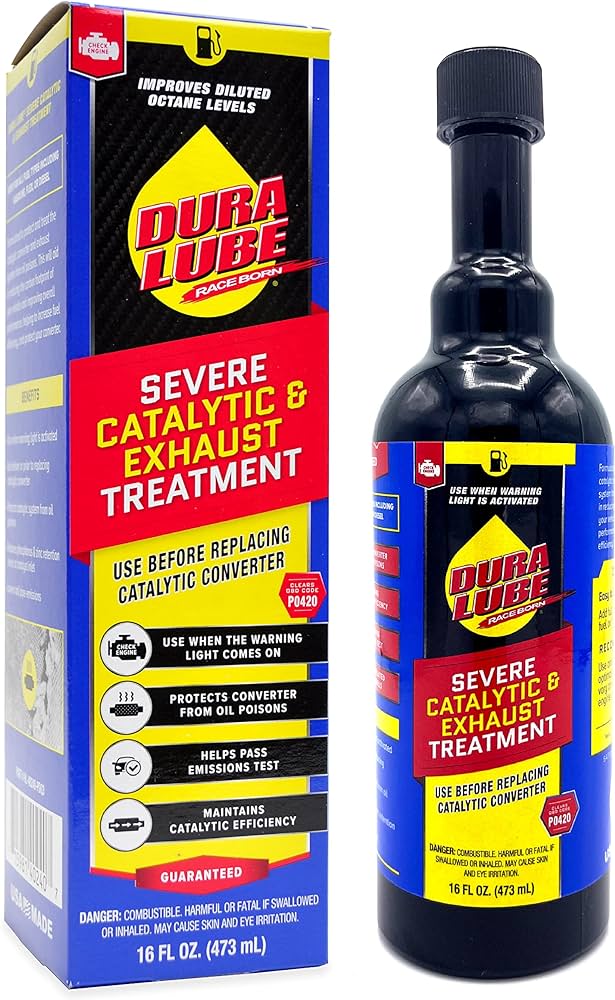Discover the Unexpected: Power through Smell Catalytic Converter
A smell coming from your catalytic converter can indicate a problem with your vehicle’s exhaust system. The catalytic converter is an essential component of your car’s exhaust system.
It is responsible for converting harmful gases into less harmful substances before they are released into the atmosphere. However, if you notice a smell coming from your catalytic converter, it might indicate a problem. A rotten egg or sulfur-like smell could mean that the catalytic converter is not functioning properly and needs to be replaced.
Additionally, a burning smell could be a sign of an overheating catalytic converter, which should be addressed immediately to prevent further damage. Regular maintenance and inspection of the catalytic converter can help ensure its proper functioning and keep your car running smoothly.
**1. The Science Behind Catalytic Converters**
The science behind catalytic converters revolves around their ability to reduce harmful emissions from vehicles. Catalytic converters function by utilizing a series of chemical reactions to convert toxic gases into less harmful substances before they are released into the atmosphere. These converters are typically made up of a ceramic or metal honeycomb structure coated with various catalysts like platinum, palladium, and rhodium.
How catalytic converters work: When the exhaust gases pass through the converter, the catalysts inside initiate chemical reactions that break down harmful pollutants such as carbon monoxide (CO), nitrogen oxides (NOx), and unburned hydrocarbons (HC) into carbon dioxide (CO2), nitrogen (N2), and water vapor (H2O).
The role of chemical reactions in conversion: Chemical reactions play a crucial role in the conversion process. The catalysts provide a surface for the reactants to react more easily, lowering the activation energy required for the reactions to occur. This helps speed up the conversion of pollutants into less harmful substances.
Understanding the importance of catalysts: Catalysts act as facilitators in the conversion process, promoting the desired chemical reactions without being consumed themselves. They enable the conversion to take place efficiently and effectively, resulting in cleaner vehicle emissions and reduced harm to the environment.
Catalytic converters play an essential role in reducing air pollution and ensuring compliance with emission standards. By employing the principles of chemistry and harnessing the power of catalysts, these devices contribute to cleaner air and a healthier planet.

Credit: www.amazon.com
**2. The Surprising Connection Between Smell And Catalytic Converters**
Smell and catalytic converters may not seem like they have anything in common, but there is actually a surprising connection between the two. Odors have the potential to unlock hidden power in chemical reactions, and exploring this link is providing valuable insights. Researchers are uncovering the unexpected potential of scent and how it can be harnessed for various applications.
Chemical reactions are not solely reliant on traditional catalysts; odors can also play a role in speeding up or enhancing reactions. By understanding the relationship between smell and chemical reactions, scientists are finding new ways to harness this power. This discovery has the potential to revolutionize several industries, including perfumery, medicine, and environmental technologies.
Exploring the scent-catalyst connection is shedding light on how different odors impact reactions and the mechanisms behind these interactions. By unlocking the hidden potential of odors, scientists are uncovering a new dimension to catalysis that could have significant implications for future technological advancements.
**3. Harnessing Smell For Improved Catalytic Conversion**
3. Harnessing Smell for Improved Catalytic Conversion
As researchers strive for innovative ways to enhance catalytic conversion, exploring the potential of smell has gained traction. Utilizing scent as a catalyst enhancer has opened up exciting possibilities. Studies have shown that certain odors can significantly improve the efficiency of catalytic converters.
By integrating specific scents into the catalyst materials, it is possible to optimize the conversion process. These scents act as catalyst promoters, accelerating the reaction rate and enhancing selectivity. The unique chemical properties of certain odors facilitate the activation of desired reactions and even suppress undesirable side reactions.
Extracting the hidden benefits of odors requires a multidisciplinary approach. Researchers are working on identifying and isolating the active compounds responsible for the catalytic effects. Through sophisticated techniques like gas chromatography, scientists can analyze the chemical composition of specific scents to determine their potential as catalyst enhancers.
The harnessing of smell for improved catalytic conversion presents an exciting avenue for further exploration. This innovative approach brings us one step closer to designing more efficient and environmentally friendly catalytic systems.
**4. The Future Of Smell Catalytic Converters**
The future of smell catalytic converters looks promising, thanks to advancements in scent-based catalytic conversion technology. These innovative converters have real-world applications across various industries. From waste management and sewage treatment to industrial exhaust systems, smell-driven catalysts have the potential to revolutionize these processes.
One of the significant advantages of using scent-based catalysts is their ability to neutralize foul odors while converting harmful pollutants. This dual functionality makes them highly efficient and versatile. Additionally, smell catalytic converters have the potential to significantly improve air quality and reduce environmental pollution.
The introduction of these converters can have profound economic impacts as well. By providing a more efficient and cost-effective solution for odor control and pollutant reduction, businesses can save on operational costs. Moreover, the implementation of smell catalytic converters can also attract environmentally conscious consumers, which can further benefit businesses.
In conclusion, the future of smell catalytic converters looks promising, with advancements in scent-based catalytic conversion technology paving the way for real-world applications and potential environmental and economic impacts.
**5. Overcoming Challenges And Misconceptions**
5. Overcoming Challenges and Misconceptions
Addressing safety concerns associated with odor-based catalysts
Odor-based catalysts have been the subject of safety concerns in various industries. However, it is important to dispel myths and misunderstandings surrounding these scent catalysis methods.
Firstly, one common misconception is that odor-based catalysts might pose health risks. Studies have shown that these catalysts do not release harmful substances and are safe for use in enclosed environments.
Another challenge is the perception that scent-driven solutions are less effective than traditional methods. However, the potential of smell-driven catalysts is immense. These systems have been proven to be efficient and cost-effective alternatives in a range of applications.
Embracing the potential of smell-driven solutions means exploring new possibilities and pushing boundaries. It opens doors to innovative technologies and sustainable processes. By dispelling these misconceptions and embracing advancements, industries can harness the power of odor-based catalysts to optimize their operations.
Frequently Asked Questions Of Smell Catalytic Converter
Can You Drive With A Smelly Catalytic Converter?
Yes, you can drive with a smelly catalytic converter. However, it is not recommended as it may indicate a problem with your vehicle’s emissions system that should be checked and fixed by a professional mechanic.
What Are 2 Symptoms Of A Failed Catalytic Converter?
Two common symptoms of a failed catalytic converter include decreased engine performance and the appearance of a sulfur-like smell from the exhaust.
Why Do I Smell A Burning Smell From My Catalytic Converter?
The burning smell from your catalytic converter may indicate a problem, such as overheating or a malfunction. It’s important to have it checked by a professional to avoid further damage to your vehicle.
Why Am I Smelling Exhaust Fumes In My Car?
There may be a strong smell of exhaust fumes in your car due to a potential issue with the exhaust system. It could be caused by a leak, a faulty catalytic converter, or a problem with the engine itself. It’s important to get it checked by a mechanic to ensure your safety and prevent any further damage.
Conclusion
To summarize, a foul smell coming from your catalytic converter can be an indication of underlying issues with your vehicle. By paying attention to the odor and addressing it promptly, you can prevent further damage and costly repairs. Regular maintenance, such as checking for leaks and ensuring proper fuel combustion, is crucial in maintaining the performance and longevity of your catalytic converter.
Don’t ignore the smell, as it could be a valuable sign of potential problems in your car’s exhaust system. Stay proactive and keep your vehicle running smoothly for years to come.








